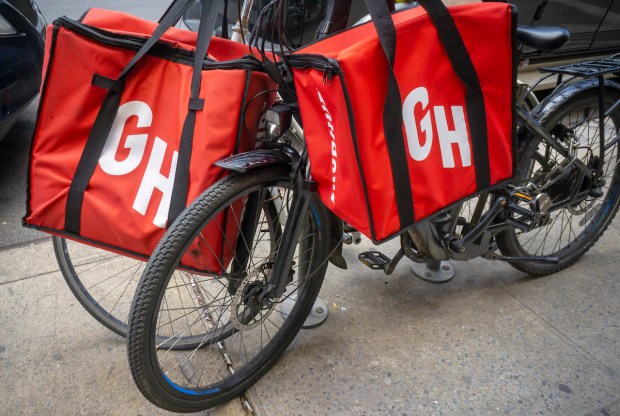
To reach new customers and drive sales, Grubhub is looking to hotels that do not offer dining options as a key opportunity.
In an interview with PYMNTS, Adam Herbert, senior director of Grubhub Onsite, sales and partnerships, explained that the company is capturing hotel guests’ demand for easy food options when they are in an unfamiliar place, driving adoption of its marketplace with this population.
“In the hospitality realm, we’re solving a need that guests have when traveling: getting meals,” Herbert said. “The properties we partner with don’t have on-site dining options, meaning guests have to go elsewhere to get a meal. Knowing not everyone has a way to go into town and grab a bite to eat, we’re making it easy for guests to order from local spots and get food delivered without having to leave the hotel.”
The aggregator partnered with Choice Hotels’ Choice Privileges loyalty program to offer Grubhub ordering to these rewards members at 500 locations.
Travelers present a key opportunity, with many consumers willing to shell out for meaningful experiences. PYMNTS Intelligence’s report “The Credit Economy: How Consumers Financed Their Summer Travel,” created in collaboration with i2c, found that consumers spent an average of $2,200 on summer travel. Plus, the study revealed that 1 in 4 consumers spent money on leisure travel in the 90 days before being surveyed.
These kinds of occasions create opportunities for Grubhub to reach consumers who might not otherwise try out the platform.
“We’re always looking for opportunities to … bring Grubhub’s offering to customers outside of the traditional marketplace,” Herbert said.
The aggregator has something of an uphill battle when it comes to driving adoption. PYMNTS Intelligence’s Connected Dining series found that as of June, 40% of consumers reported having used an aggregator to place an order at least once in the previous six months, and 5% of restaurant customers placed their last order via aggregator.
Additionally, 35% of aggregator users reported that they made purchases from Grubhub. Meanwhile, 77% of aggregator customers reported using category leader DoorDash, and 49% said the same of U.S. runner-up Uber Eats.
As Grubhub expands its hospitality business — previous partners have included extended-stay brand Homewood Suites by Hilton, Resorts World Las Vegas and Sonesta — the aggregator looks for areas not only where there is a need but also where the company has already built out its delivery network and marketplace partners. These kinds of considerations are key, given that, even at the best of times, the unit economics of restaurant delivery offer little to no margin for error, with high costs making it difficult to make a profit.
“When we are assessing partnerships, one of the main variables is the location of the property, since we want to make sure we have the supply, both on the restaurant and driver end, to make sure that guests have options and are able to get their meal delivered quickly,” Herbert said.